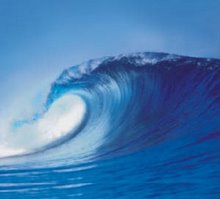All salt originally came from the sea.
Sodium Chloride (NaCl) is the product commonly referred to as 'salt'. However, sea salt is a far more complex salt than NaCl. Common salt should be marketed as 'sodium chloride, extracted from sea salt'.
The chemical industry is the largest consumer of salt using about 60% of total production. The industry predominantly converts the salt into chlorine, caustic and soda ash, without which petroleum refining, petrochemistry, organic synthesis, glass production and so on would not be possible.
The second largest user of salt is humankind. Humans need about 30% of total salt production to support their physiological functions and eating habits. Salt for food is the most 'taken for granted' commodity; available from thousands of sources in hundreds of qualities as table, cooking and industrial salt for food production.
About 10% of salt production is used for road de-icing, water treatment, production of cooling brines and other smaller applications.
Whatever the use of salt, industrialised salt production worldwide is focused on the recovery of pure sodium chloride only, clear of all 'impurities'. The purer the salt, the more valuable it is. In the chemical industry any contamination of the sodium chloride feedstock may have serious, even lethal consequences.
The 'impurities' in natural salt that the chemical industry refer to are any mineral or organic elements other than the single chemical, sodium chloride. Sea water contains an extraordinary number of other mineral elements in a complex and dynamic natural equilibrium . It is exactly these other constituents that 'BioMin' - liquid minerals has.
The crystal salt used in the processed food industry, whether stored in silos or used in a shaker, must retain free-flowing properties. Magnesium on the surface of the crystals absorbs humidity from the air and makes the salt damp. Silos cannot be emptied and shaker holes get blocked. The salt loses market and value. To overcome these hurdles, the industry adds free-flowing agents 341 and 554, and anti-caking agents 535 and 536, along with processed inorganic iodine in the form of potassium iodide.
Sodium Chloride (NaCl) is the product commonly referred to as 'salt'. However, sea salt is a far more complex salt than NaCl. Common salt should be marketed as 'sodium chloride, extracted from sea salt'.
The chemical industry is the largest consumer of salt using about 60% of total production. The industry predominantly converts the salt into chlorine, caustic and soda ash, without which petroleum refining, petrochemistry, organic synthesis, glass production and so on would not be possible.
The second largest user of salt is humankind. Humans need about 30% of total salt production to support their physiological functions and eating habits. Salt for food is the most 'taken for granted' commodity; available from thousands of sources in hundreds of qualities as table, cooking and industrial salt for food production.
About 10% of salt production is used for road de-icing, water treatment, production of cooling brines and other smaller applications.
Whatever the use of salt, industrialised salt production worldwide is focused on the recovery of pure sodium chloride only, clear of all 'impurities'. The purer the salt, the more valuable it is. In the chemical industry any contamination of the sodium chloride feedstock may have serious, even lethal consequences.
The 'impurities' in natural salt that the chemical industry refer to are any mineral or organic elements other than the single chemical, sodium chloride. Sea water contains an extraordinary number of other mineral elements in a complex and dynamic natural equilibrium . It is exactly these other constituents that 'BioMin' - liquid minerals has.
The crystal salt used in the processed food industry, whether stored in silos or used in a shaker, must retain free-flowing properties. Magnesium on the surface of the crystals absorbs humidity from the air and makes the salt damp. Silos cannot be emptied and shaker holes get blocked. The salt loses market and value. To overcome these hurdles, the industry adds free-flowing agents 341 and 554, and anti-caking agents 535 and 536, along with processed inorganic iodine in the form of potassium iodide.


Nuk ka komente:
Posto një koment